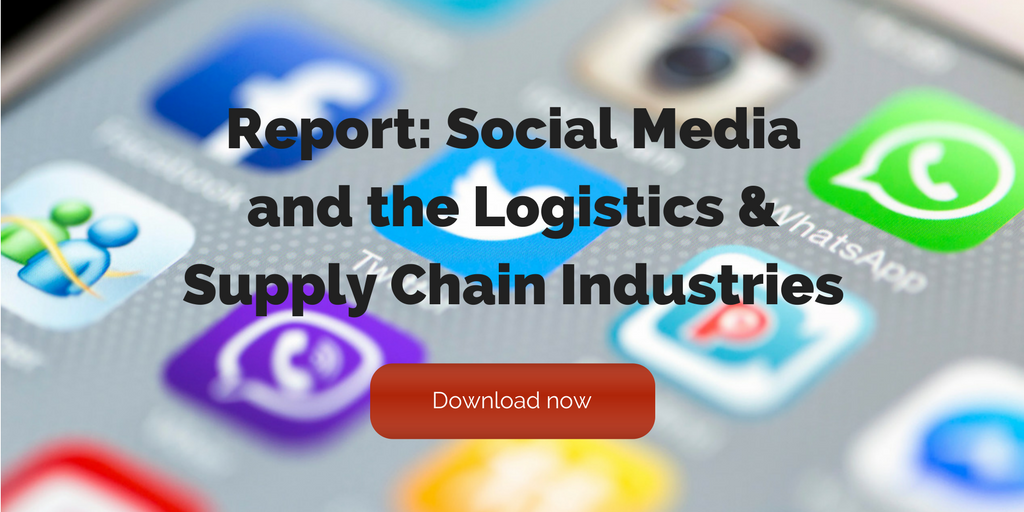
by Fronetics | Aug 18, 2015 | Blog, Leadership, Marketing, Social Media

In one of the most infamous social media gaffes, the insurance giant Aflac fired its widely-recognized spokesman Gilbert Godfrey after he tweeted insensitive comments about the Japanese tsunami in 2011. The rapid growth of social media has created a gray area for employers and employees alike in the space where personal and professional meet, to be certain. But, social media has also presented some of the greatest opportunities for marketing growth since the introduction of the internet. Even so, companies have been slow to relinquish control and absolute authority of their brands on social media. Those that have embraced employees as brand ambassadors, though, have seen mighty returns on their efforts.
A few years ago when Sodexo set out to transform the way it uses social media, no one could have foreseen how successful the initiative would eventually become. Through a series of intentional moves, the company empowered its employees to use social media to extend its brand. In short, Sodexo shifted its social media efforts from strictly marketing to the education and empowerment of employees. Its expanded marketing efforts engaged and mobilized its entire workforce as brand ambassadors. As an example, to find and attract top talent using existing employee connections, Sodexo crafted a targeted social strategy. The company identified employees who were frequent social media users with many connections and tasked them with social job sharing – in other words, employees were asked to use their personal social media accounts to advertise job openings to their collective social connections. In just three years, Sodexo grew their average job opening pageviews per month by over 1,100%.
So how can your company foster a similar online community of connected and engaged employees? To begin, listen and observe. Monitoring the activity of both your company’s social profiles and that of your employees will help you to understand how employees are currently using social media to interact with your brand. From there, you’ll be able to identify employees that are heavy users of social media and which employees are online community influencers. Note what topics and social networks drive the most engagement. Use this initial research to set benchmarks and goals for progress. After you’ve completed the review of your company’s social landscape, you’ll have a clear picture of where the greatest areas of opportunity lie and who to tap for help.
Successfully reframing your employees as brand ambassadors through an intentional social strategy requires creating a culture that empowers and incentivizes employee participation. It’s important to clearly articulate your company’s overall social strategy, but much more important to link its goals and objectives to employee job functions. Employees are much more likely to participate if what you’re asking them to do is seen as complementary, not supplementary to their workload. To encourage informed participation, provide training for your social media brand ambassadors. For example, you could invite a local college professor to present at an internal workshop outlining how to write content specifically for social media. Or, mine existing internal resources by tapping your communications department to lead an introductory corporate digital communications webinar for social brand ambassadors. Creating an informative and sustaining dialogue with your employees will be key in determining whether or not your efforts will be successful.
Once you’ve empowered your employees with the appropriate resources and knowledge, motivate them to participate online. Ask brand ambassadors to follow your company pages, promote company events or initiatives, and share company-posted content. Assign them as group moderators of online communities. Request their contribution as subject matter experts for blog posts. Whatever it is you decide to ask of them, it’s critically important that you regularly engage them. Companies that consistently treat employees as partners in social media by marrying the personal and professional growth of employees stand to gain significant benefits.
Back at Sodexo, a quick glance at the company’s social media profiles reveals a thriving online community driven by employee participation. The Sodexo Facebook page shows a wealth of employee comments and posts, links to employee blogs, and corporate posts highlighting employees. The company’s Twitter account is populated by dedicated hashtags for employees and tweets about employee participation in one of the company’s social initiatives. It’s clear Sodexo’s employees are enjoying the perks that come along with engaging online with their employer. Meanwhile, Sodexo itself is expanding brand awareness, enjoying improved internal communication, increasing sales, and attracting top talent – simply by empowering its own employees to become ambassadors of the brand.

by Fronetics | Aug 13, 2015 | Blog, Marketing, Social Media, Strategy
 With LinkedIn this month reporting a 33% year-over-year growth of revenue and a 21% increase in membership, it remains solid in its role as the primary social network for business. Data from outside the company confirm its dominance. A University of Massachusetts study published earlier this year examined social media use by the fastest-growing corporations in the U.S. and found that LinkedIn is the platform of choice (94%) for America’s top companies. There’s little doubt that the 380 million member social media giant has transformed the relationship between companies, its customers, and its employees. But with so many potential connections and opportunities for engagement, how can your company squeeze the most out of its efforts to connect with audiences on LinkedIn? Look to your employees.
With LinkedIn this month reporting a 33% year-over-year growth of revenue and a 21% increase in membership, it remains solid in its role as the primary social network for business. Data from outside the company confirm its dominance. A University of Massachusetts study published earlier this year examined social media use by the fastest-growing corporations in the U.S. and found that LinkedIn is the platform of choice (94%) for America’s top companies. There’s little doubt that the 380 million member social media giant has transformed the relationship between companies, its customers, and its employees. But with so many potential connections and opportunities for engagement, how can your company squeeze the most out of its efforts to connect with audiences on LinkedIn? Look to your employees.
Consider this case study in “smart ownership”. Aiming to increase the popularity of its Instagram account, the dedicated social media team at National Public Radio (NPR) did something unheard of – they turned ownership of its Instagram account over to its multimedia team. The team reasoned that aligning the organization’s visual strategy with a digital medium that’s innately visual could be the key to deriving the most value from the social network. In short, NPR recognized the value of extending ownership of its social media efforts to its employees.
Here’s why your business should leverage the popularity of LinkedIn and develop its own smart ownership strategy:
Broadening inclusion of your company’s LinkedIn efforts beyond a sole person or dedicated social media team lets employees share ownership of your brand. A strategy informed, directed, and executed by a single team or person can sometimes be narrow in scope. Encouraging the participation of your employees expands perspective and gives your in-house subject matter experts a digital voice – one that might connect beautifully with your leads and prospects.
Encouraging your employees to engage with your company on LinkedIn helps your brand reach new audiences. Your company benefits in a number of ways when an employee connects with it on LinkedIn. When a new employee adds his new work experience to his profile, your company’s logo is displayed on his profile for each of his connections to see. When an employee likes, shares, or comments on the content published by your business, a notification is generated and seen by his connections. These seemingly routine updates or tasks, like personal LinkedIn profile updates, can turn into real opportunities to reach an expansive audience.
Engaging employees on LinkedIn creates trust and substantiates professional relationships. Several years ago, faced with the rapid emergence of social media, many employers chose to ban social media sites from company networks thinking that if they could prohibit the use of these sites during work hours, employees would be more attentive to their work and thus more productive. What we know now, is that these types of strategies stymy growth and propagate missed opportunities. The author of a 2013 study examining the link between social media and worker productivity has this to say: “… the ubiquitous digital connectivity altered workers’ sense of ‘presence’ and helped rather than hindered the effective completion of collective tasks.” The message here is two-fold: encouraging employee use of LinkedIn builds trust and increases productivity.
Promoting LinkedIn as a company-endorsed channel of distribution builds positive branding and marketing opportunities. Quite simply, who better to promote the work of your company than the employees who carry out the day-to-day responsibilities? And because people are far more likely to interact with individuals over brands, your company’s promotion by your employees is likely to drive more engagement.
Communicating with employees via LinkedIn can take your social efforts beyond marketing. While it’s true that most businesses use social media to ultimately affect their bottom line, not all social media efforts need to be strictly marketing. A robust LinkedIn community of employees can serve to both improve employer-employee communications and enhance the distribution of public information. Need to get your messaging out quickly? Use your employee base on LinkedIn to help distribute timely messaging or to clarify your company’s position on an emerging matter.
Building a successful smart ownership strategy isn’t about giving away ownership, but about building inclusion and better aligning existing resources. Businesses that encourage employee engagement on LinkedIn are well-positioned to build brand ambassadors out of those who know their business most intimately.
Fronetics Strategic Advisors is a leading management consulting firm. Our firm works with companies to identify and execute strategies for growth and value creation.
Whether it is a wholesale food distributor seeking guidance on how to define and execute corporate strategy; a telematics firm needing high quality content on a consistent basis; a real estate firm looking for a marketing partner; or a supply chain firm in need of interim management, our clients rely on Fronetics to help them navigate through critical junctures, meet their toughest challenges, and take advantage of opportunities. We deliver high-impact results.
We advise and work with companies on their most critical issues and opportunities: strategy, marketing, organization, talent acquisition, performance management, and M&A support.
We have deep expertise and a proven track record in a broad range of industries including: supply chain, real estate, software, and logistics.

![[Infographic] Content Marketing in Manufacturing: What Works, What Needs Work](https://www.fronetics.com/wp-content/uploads/2024/10/Infographic-content-marketing-in-manufacturing-801x675.png)
by Fronetics | Aug 11, 2015 | Blog, Content Marketing, Manufacturing & Distribution, Marketing, Social Media, Supply Chain
Manufacturing is experiencing a graying of its industry. With millions of workers at or near retirement age, many top posts are occupied by workers who have seen radical changes in the workplace over the course of their careers. And while executives have largely embraced advances in technology to transform the operations side of manufacturing, research shows they’ve been slow to adapt marketing and sales processes using emerging digital tools and technology.
Earlier this year the Content Marketing Institute released its annual report on the current state of content marketing within the manufacturing industry. This year’s report shows that the manufacturing industry continues to make strides in leveraging digital tools for sales and marketing purposes. Still, because these efforts are fairly new, the report also captures a sense of ambiguity about these new marketing strategies, particularly when it comes to measuring program success. Other notable findings from the study reveal that more than two-thirds of manufacturers are using content marketing to build brand awareness, boost sales, and generate leads. The report also uncovers some marked changes between the most recent report and last year’s report; there has been a shift in both the way manufacturers are choosing to distribute content and their perceived effectiveness of those tactics.
Check out our Infographic for a more detailed look at the report’s findings:

Fronetics Strategic Advisors is a leading management consulting firm. Our firm works with companies to identify and execute strategies for growth and value creation.
Whether it is a wholesale food distributor seeking guidance on how to define and execute corporate strategy; a telematics firm needing high quality content on a consistent basis; a real estate firm looking for a marketing partner; or a supply chain firm in need of interim management, our clients rely on Fronetics to help them navigate through critical junctures, meet their toughest challenges, and take advantage of opportunities. We deliver high-impact results.
We advise and work with companies on their most critical issues and opportunities: strategy, marketing, organization, talent acquisition, performance management, and M&A support.
We have deep expertise and a proven track record in a broad range of industries including: supply chain, real estate, software, and logistics.


by Elizabeth Hines | Aug 10, 2015 | Blog, Content Marketing, Marketing, Strategy

Being in the strategic advisory space, I get a lot of exposure to various business strategies, strategic plans, and sales plans, both internally to organizations and from outsiders looking to raise money or gain influence.
When it comes to strategic planning, too often there is “creative accounting.” That is, the artful creation of financials that match and make numerical sense, but have very little credibility in the real world because the important business details are left out.
Businesses spend far too much time creating spreadsheets and devote too little time paying attention to information that really matters. As a result, any plan that cannot be substantiated outside of a spreadsheet is doomed to be discounted…and so are the presenters.
Don’t get me wrong, you need to have a financial base and rock solid financial modeling in your planning efforts. It is, however, equally important to spend time on building credibility in those numbers by focusing on what interested parties need to know outside of the spreadsheets in order to make an informed decision.
I encourage clients to focus on these 4 items in order to build credibility in their financial plans and create a winning business model:
1) What is the opportunity? What the business will sell, who is buying, why are they buying, how much are they buying now, and how much and how fast will their buying increase (or decrease) and why?
2) Who are the people involved? The internal team, the external team, any outside resources or partners providing key services or important resources, contingencies for the partnerships and the switching costs involved if needed.
3) The financial context. How will interest rates, buying trends, competition, demand, and for that matter, supply shape the financials of the plan.
4) The up-side and the down-side risk. What can go right or wrong, to what extent (up or down) and how will the team or company adjust to the increased revenue opportunity as well as the opposite…the decrease in the need for the product or service. Do these risks and rewards make sense in real world scenarios?
Gone are the days where financial engineers can develop models without operational integrity. Business models that make sense financially and operationally are now in vogue…thank goodness.
Fronetics Strategic Advisors is a leading management consulting firm. Our firm works with companies to identify and execute strategies for growth and value creation.
Whether it is a wholesale food distributor seeking guidance on how to define and execute corporate strategy; a telematics firm needing high quality content on a consistent basis; a real estate firm looking for a marketing partner; or a supply chain firm in need of interim management, our clients rely on Fronetics to help them navigate through critical junctures, meet their toughest challenges, and take advantage of opportunities. We deliver high-impact results.
We advise and work with companies on their most critical issues and opportunities: strategy, marketing, organization, talent acquisition, performance management, and M&A support.
We have deep expertise and a proven track record in a broad range of industries including: supply chain, real estate, software, and logistics.


by Fronetics | Aug 6, 2015 | Blog, Logistics, Marketing, Social Media, Supply Chain, Transportation & Trucking

Transportation and logistics is a field that is booming. The business is a money-maker and a cornerstone of day-to-day functioning. It’s one that has been present for centuries. We are well past the Age of Discovery, but transportation and logistics companies carry on the torch of moving products that people need and desire around the world. One might wonder if the sultriness of the Silk Road and the Spice Trade has lost its allure and sexiness, but that needn’t be the case. Social media has brought about a fantastic opportunity for transportation and logistics companies to share their successes, display their offerings, create community, and convert leads.
Where to Start
First, think about it. Many transportation and logistics companies think about social media and how to use it, but cite a lack of time as a reason they haven’t explored the various platforms. Thinking about how social media can work for your logistics or transportation company is the first stop towards progress.
Second, learn about it. Understanding individual usage of social media versus B2B usage of social media is important. Do your consumers use LinkedIn, Facebook, Twitter? Where are your competitors finding success, and what platforms are they missing? Once you figure these things out the impulse will be to get started. Post away! Tweet away! Blog away! However, creating a Facebook page or a Twitter account will not draw in your community of employees or existing clients, and will not attract potential customers or clients. Having an account is great thing, but it’s not the most important thing. Knowing how to express your brand, what content to curate and create, and how frequently to share content is critical to social media success.
Learning is a process and takes time. Set up also takes time. Hiring an outside agency to do this work can both save you time, and will ultimately reap ROI. Marketing strategy companies have been doing this work already, and understand how to highlight your company. They know the market, and once they get to know you a bit better, you can work together to figure out how to express your brand through the platform of social media.
What to Highlight
Once you figure out who to focus on and how to reach that community, creating and curating your unique content is key. What is most informative and helpful to your clients? What will feel meaningful to them? What will catch and hold their attention? How do you want people to perceive you, your employees, and your products/services? Some studies have shown that conversion rates from social media can be 100% more effective than from outbound marketing, so getting this right could greatly benefit your company.
The joy of social media is its speed and its ability to humanize a company. A company’s Twitter feed is not like its white papers. Social media is known for personalizing things, so let people know the more human side of your business. Who are the drivers? Who are the employees? What are the success stories? Celebrate your community, partners, and clients. This is a place to engage with other businesses – to educate them and learn from them.
One perfect example of a logistics company that thrives in this arena is UPS. The logistics company has found success with unique, fun, interesting, frequent posts, tweets, and blogs. They also highlight their “heroes” by telling stories, often through video, of their heroic drivers who have been known to save lives. They show the human side of delivery. They connect. And when it comes to social media, it’s all about connection.
Two other examples of companies that excel in this area are Sourcemap and Transfix. Both companies have leveraged social media as a platform for growth. Sourcemap’s founder and CEO Leonardo Bonanni credits social media for the success for his business: “Sourcemap wouldn’t be here without social media.” For Transfix, social media and digital technologies enables the company to make the trucking industry more efficient and user-friendly.
Fronetics Strategic Advisors is a leading management consulting firm. Our firm works with companies to identify and execute strategies for growth and value creation.
When it comes to marketing we work with our clients to create and execute strategies that drive success and elevate their brand position within the industry. Unlike other firms, we align marketing programs with business objectives and, through a data driven approach, are able to deliver results with a targeted ROI. Our team is comprised of strategists, marketing professionals, writers, designers, and experts in social media. Together we leverage our experience to increase brand awareness, position our clients as thought leaders, drive meaningful engagement with prospects and customers, and help businesses grow.



by Fronetics | Aug 4, 2015 | Blog, Content Marketing, Logistics, Marketing, Supply Chain

Do reverse logistics companies need to focus on content marketing? Yes.
Should they use LinkedIn? Yes. Twitter? Yes. YouTube? Yes. Yes. Yes. Should they blog? Yes!
Several reverse logistics companies are already using content marketing in an effort to connect with peers and potential B2B consumers. IT Asset Disposal (ITAD) company, TradePort, has an informative blog and utilizes LinkedIn, Facebook, and Twitter. The large 3rd-party logistics (3PL) company, Unyson, utilizes the top B2B social media outlets with just under 2,000 followers on Twitter and just over 3,000 followers on LinkedIn. On the homepage of their website you can view a running tally of how much money they have saved their customers. At the time of the writing of this blog it’s at $2,055,763,398.
What the studies show:
The Content Marketing Institute reports that 8 out of 10 people identify themselves as blog readers, and 23% of all time spent online is spent on social media sites. With the rise of the blog, companies have gotten smart about how to reach their current and potential consumers. According to Forbes, many brands are moving their advertising budgets from television to online videos.
In the B2B world things are changing, too, with many executives wanting to gain information through other mediums. The Content Marketing Institute also reports that a majority (80%) of business decision-makers prefer to get information from articles rather than through advertisements.
We know that inbound marketing is effective in garnering consumers’ attention. It’s aligned with a generation of people who want to be educated about the products they’re buying and who are willing to search for those products online. Even with all of this known, it’s important to ask: what is the ROI when it comes to content marketing?
Return on Investment
In order to calculate ROI, the cost of content marketing needs to be assessed:
- salaries (if going in-house)
- marketing agency or contractor services
- additional overhead
- distribution costs
- design and publication software
After those costs have been calculated, the next step is to subtract that number from the revenue generated. The Guardian has put forth its simple content marketing ROI calculator:
(Revenue Generated – Cost of Content Marketing) / Cost of Content Marketing = ROI
According to the newspaper, “A simple calculation could say that you drove 1000 visits through a piece of content, and Google Ads would have cost £1 per click, e.g. £1000 to equal the same. If the content only cost £500, you have a saving!”
But with most seemingly simple things, there’s complexity underneath. Dig deeper and ask more questions:
- Is the money you’re spending on inbound marketing deterring other, less obvious, costs?
- Would it have cost you more through outbound marketing methods to achieve that same level of visibility than through inbound marketing solutions?
- Is inbound marketing bringing in customers or closing a deal more quickly than alternative methods (time is money, after all)?
- Is inbound marketing cutting down the need for staffing in other areas, such as support staff to manage inquiries or support calls?
Some incalculable values from inbound marketing, like consumer preferences, content intelligence, customer relationship strategies, and branding can be hard to tie to a number, but over time you will see that your ROI will become more clear to you as you generate leads, turn leads into customers, and see the result in the form of money gained (American dollars or British pounds!).
There are several ways to measure ROI. Reverse logistics will continue to grow in importance as regulations increase and the environment continues to come to the forefront as an ethical and practical issue. Content is king, so consider it, measure it, and go for it.
Fronetics Strategic Advisors is a leading management consulting firm. Our firm works with companies to identify and execute strategies for growth and value creation.
When it comes to marketing we work with our clients to create and execute strategies that drive success and elevate their brand position within the industry. Unlike other firms, we align marketing programs with business objectives and, through a data driven approach, are able to deliver results with a targeted ROI. Our team is comprised of strategists, marketing professionals, writers, designers, and experts in social media. Together we leverage our experience to increase brand awareness, position our clients as thought leaders, drive meaningful engagement with prospects and customers, and help businesses grow.






![[Infographic] Content Marketing in Manufacturing: What Works, What Needs Work](https://www.fronetics.com/wp-content/uploads/2024/10/Infographic-content-marketing-in-manufacturing-801x675.png)




